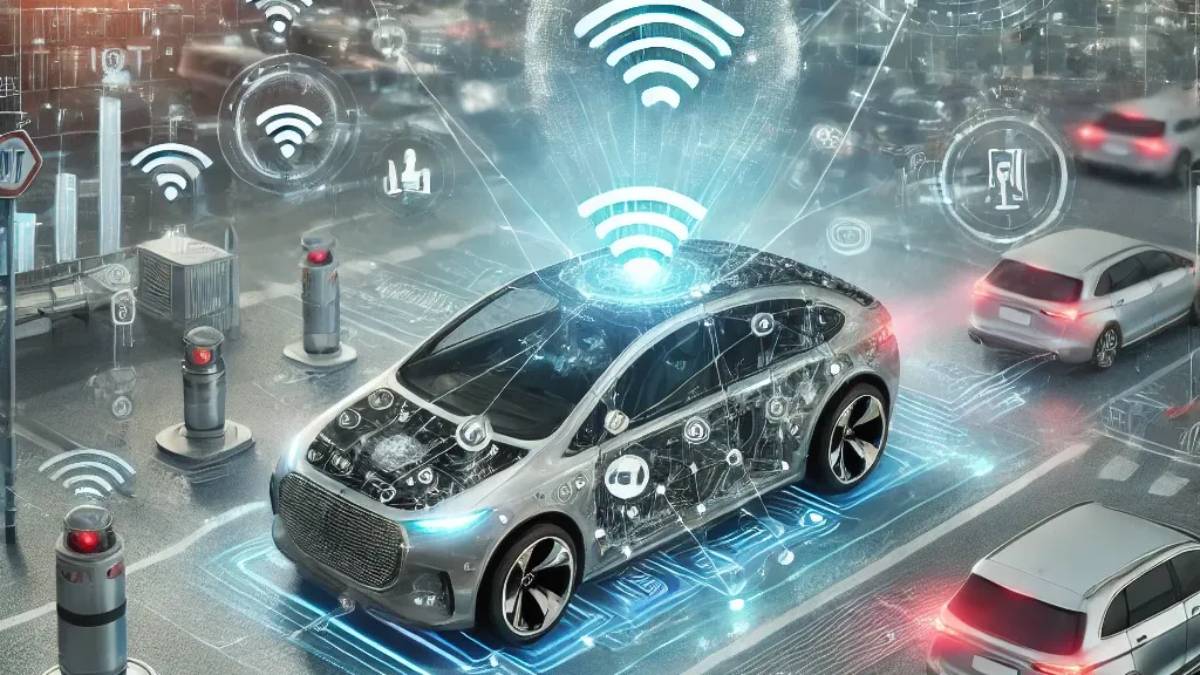
Predictive Maintenance: How AI is Preventing Car Breakdowns
The automotive industry has changed a lot lately. Artificial Intelligence (AI) is making cars smarter and more efficient. A major advancement is predictive maintenance. This technology helps stop car breakdowns before they happen. This blog explores how AI is changing vehicle diagnostics and maintenance. It helps make cars safer and more reliable on the road.
Key Benefits of Predictive Maintenance in Automotive AI
Predictive maintenance is transforming the automotive industry. It provides a proactive way to care for vehicles. Predictive maintenance is different from traditional methods. Instead of waiting for scheduled checks or fixing problems after they happen, it uses AI to monitor a car’s condition in real-time. This method helps spot and fix problems before they cause breakdowns.
Enhanced Vehicle Longevity
One of the primary benefits of predictive maintenance is the extended lifespan of vehicles. By continuously monitoring the health of a car’s components, AI systems can predict when parts are likely to fail. This lets car owners fix or replace parts before they cause more damage. In the end, it helps the vehicle last longer.
AI can monitor the wear on brake pads, engine parts, and transmission systems. It then alerts the driver when maintenance is needed, depending on usage instead of mileage. This helps with quicker fixes. It keeps vehicles on the road longer and lowers the chance of serious failures.
Cost Efficiency
Preventing breakdowns before they happen not only saves time but also reduces repair costs. Traditional maintenance schedules can cause unnecessary part replacements. They may also miss problems that could become expensive if ignored. Predictive maintenance means doing only necessary repairs. This helps save on maintenance budgets and cut down on surprise costs.
Fleet managers, in particular, benefit immensely from cost-efficient AI diagnostics. Predictive maintenance cuts vehicle ownership costs. It does this by reducing downtime, boosting vehicle availability, and making repairs smoother. Over time, this leads to significant savings and better allocation of resources.
Improved Safety
Safety is paramount when it comes to vehicle maintenance. Predictive maintenance boosts road safety. It keeps cars in their best working condition. AI vehicle diagnostics spot potential failures early. This helps prevent accidents from mechanical issues like brake or engine problems.
Imagine a scenario where a critical suspension component is on the verge of failing. AI-driven predictive analytics can spot odd vibration patterns or shifts in driving dynamics. It alerts the driver or service centre before a breakdown happens. This real-time safety net adds another layer of protection for both drivers and passengers.
Real-Life Applications
Some car makers and tech firms are using predictive maintenance in their vehicles. Tesla’s cars have advanced AI systems. These systems check and report on the health of different car parts. BMW’s ConnectedDrive system also uses AI. It gives real-time diagnostics and maintenance alerts. This helps keep their cars in top shape.
Other companies like General Motors and Mercedes-Benz are adding AI to their service platforms too. These systems look at usage patterns, weather, and driver behavior. Then, they give maintenance tips for each vehicle. Startups in automotive AI are breaking new ground. They are creating apps that link to a car’s onboard diagnostics system. These apps send alerts to drivers through smartphone notifications.

Additional Expert Tips & Common Mistakes to Avoid
Predictive maintenance has many benefits. However, it’s important to follow best practices and avoid common pitfalls when using this technology.
Embrace Data-Driven Decisions
AI vehicle diagnostics rely heavily on data. Ensure that your vehicle’s AI system is regularly updated and calibrated to make accurate predictions. Skipping software updates can cause algorithms to become outdated. This may lead to less accurate maintenance predictions. Regular data audits and firmware updates are crucial to keeping AI systems performing at their peak.
Automotive service providers should invest in training technicians to interpret AI diagnostics accurately and act upon them. This human-machine synergy allows for faster repairs and more precise interventions. Integrating telematics platforms with current fleet management systems boosts visibility and control of maintenance tasks.
Avoid Over-Reliance on Technology
While AI is a powerful tool, it’s essential not to rely solely on it for vehicle maintenance. Regular physical inspections and servicing by a qualified mechanic remain crucial. AI should complement, not replace, traditional maintenance practices.
AI may miss some details. It can struggle with subtle frame damage from small collisions. Also, it might not detect internal corrosion in hard-to-reach areas. Human expertise is still essential, especially for complex mechanical diagnostics and detailed assessments.
Understand the Limitations
Predictive maintenance is not foolproof. It can predict many potential issues, but not all. Users should be aware of the system’s limitations and continue to practice regular vehicle care and maintenance.
For instance, sudden mechanical failures from factory defects or environmental conditions might be beyond what the predictive model can handle. Also, sensor calibration errors or software bugs can sometimes cause false positives or missed alerts. Being aware of these scenarios ensures a more balanced and responsible approach to AI-enabled vehicle care.
Advanced Insights: The Future of AI in Vehicle Maintenance
AI has great potential in predictive maintenance. As technology grows, its use in the automotive industry will also expand.

Integration with IoT
The Internet of Things (IoT) is set to play a significant role in the future of predictive maintenance. AI systems connect vehicles to a network of devices. This helps them gather and analyze more data. As a result, they can offer accurate and detailed diagnostics.
IoT-enabled vehicles can talk to external systems. These include weather stations, traffic monitors, and service networks. This communication boosts the predictive power of AI algorithms. Driving in extreme temperatures or on roads with salt can affect wear rates. This data can be added to the maintenance model to improve predictions.
Machine Learning Enhancements
Machine learning, a subset of AI, will further enhance predictive maintenance capabilities. AI systems learn from data. Over time, they get better at predicting failures. They can also suggest ways to prevent issues. This will make them more reliable and efficient.
Advanced models will start using anomaly detection, clustering algorithms, and neural networks. This will help improve diagnostic accuracy. These systems spot patterns that even skilled mechanics might miss. They can detect small changes in engine sounds or vibrations. These changes often signal early problems.
Personalised Maintenance Plans
Future AI advancements may create maintenance plans that fit each driver’s habits and vehicle use. This tailored method will make sure each vehicle gets the care it needs. This will help improve its longevity and performance.
For example, a city driver in stop-and-go traffic may get different service alerts than a rural driver who often enjoys long, smooth trips. AI considers driving style, average speeds, road types, and personal schedules. This helps it provide smart maintenance reminders.
Predictive Maintenance for Electric Vehicles (EVs)
As electric vehicles grow in popularity, predictive maintenance will be key. It will help manage their specific maintenance needs. EVs have fewer moving parts than traditional cars. Still, they need careful checks on battery health, motor performance, and software systems.
AI is great for tracking battery wear, predicting charging issues, and managing heat in EVs. The battery is one of the priciest parts of EVs. So, getting accurate predictions can lower ownership costs and boost reliability.
Conclusion: The Road Ahead for Predictive Maintenance
Predictive maintenance is a big step in automotive technology. It brings great benefits for safety, saves costs, and helps vehicles last longer. AI is evolving, and its role in vehicle diagnostics and maintenance is increasing. This will give car owners more tools to keep their cars running well.
We are entering a time when vehicles are more than just ways to get around. They are smart systems that can monitor themselves and report their status. This change will transform car ownership and servicing. We will move from fixing problems after they happen to a complete, preventative approach. This new model will boost vehicle uptime and lower risks.
Predictive maintenance will be key for car owners in the future. It will help prevent breakdowns and keep vehicles running smoothly. If you want to adopt this technology, now is the time. Explore your options and embrace the future of automotive care.
Are you ready to take the next step in vehicle maintenance? Try using AI-driven predictive maintenance for your car. You’ll enjoy a smarter, more reliable vehicle.